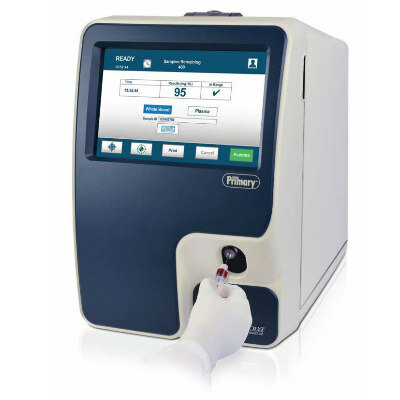Salivary Biomarkers Detected for Cancer
By LabMedica International staff writers
Posted on 12 Sep 2011
A saliva test has been developed that can measure the amount of potential carcinogens bound to a person's DNA that will help determine their risk for cancer. Posted on 12 Sep 2011
Tandem mass spectrometry was used to detect DNA adducts that form when a potentially cancer-causing substance is chemically attached to a strand of DNA, which may interfere with the action of genes involved in health and disease.
Scientists at National Chung Cheng University (Ming-Hsiung, Taiwan ROC) measures the levels of five key DNA adducts, including some that form as a result of cigarette smoking. Stable isotopomers of the analytes were added to DNA isolated from human saliva as internal standards. These were then subjected to enzyme hydrolysis, and enriched by a solid-phase extraction column before analysis by the nanoflow liquid chromatography-nanospray ionization tandem mass spectrometry under the selected reaction-monitoring mode.
Only 5 µg of DNA sample was analyzed for simultaneous quantification of these adducts. The easy accessibility and availability of saliva and the requirement for the small amount of DNA samples make this assay clinically feasible as noninvasive biomarkers for DNA damage resulting from oxidative stress. Traditionally, DNA for such tests had to be obtained by taking a blood sample and processing the white blood cells, which contain large amounts of the genetic material. More recently, however, scientists found that DNA samples could be obtained more conveniently from saliva. The DNA is present in white blood cells found naturally in saliva and from cells shed from the lining of the mouth. DNA adducts are induced by known carcinogens and the presence of such an adduct indicates prior exposure to a potential carcinogen, but does not by itself indicate the presence of cancer.
Hauh-Jyun Candy Chen, PhD, who led the research team, said, "The test measures the amount of damaged DNA in a person's body. This is very important because such damaged DNA we call this 'DNA adducts' is a biomarker that may help doctors diagnose diseases, monitor how effective a treatment is and also recommend things high-risk patients can do to reduce the chances of actually getting a disease." The study was presented on August 31, 2011, at the 242nd National Meeting & Exposition of the American Chemical Society held in Denver (CO, USA).
Related Links:
National Chung Cheng University













